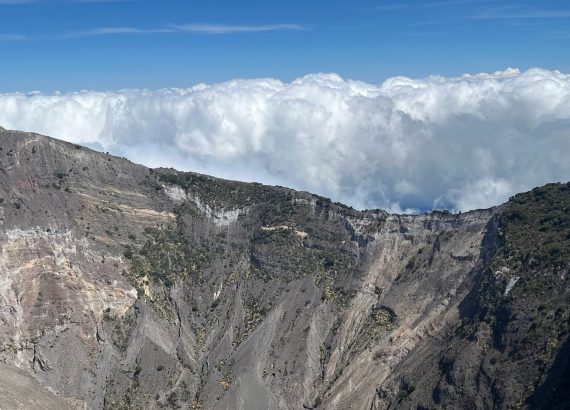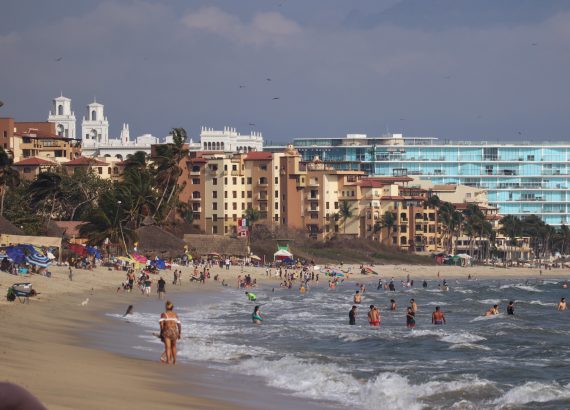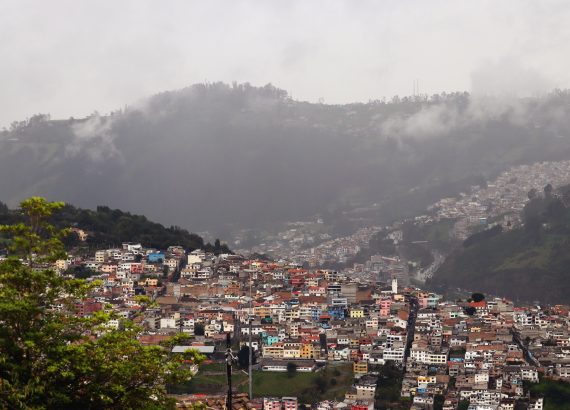Mazatlán, known as the Pearl of the Pacific, is at the western edge of Mexico on the opposite side of the Baja Peninsula, facing the coast of Cabo San Lucas. Not as easy to get there if you are coming from the Northeast. Yet, a popular vacation and retirement destination for Americans, Canadians, Europeans and Latin Americans. Tropical perfected weather all year round with miles of beaches, sunsets and cultural experiences to escape to and forget your worries and deadlines.
Getting There
I found the connecting flights to be problematic since there are no direct flights from New Jersey. This meant that I would have to stop either at Dallas, Houston, Phoenix or California arriving too late to catch the early flights and being held up at the airport late into the evening hours. Not wanting to spend 20+ hours in the airport, I used the opportunity to leave a day early to Dallas and spend the day at the Dallas Arts District, catching the first morning flight to Mazatlán. Coming back home was not great, catching a red eye and waiting out the time at the airport while writing this story.
Mazatlán …. A Bit of History and Geography
This is a fairly midsize city with close to a half million residents. In the last 20 years, this city has transformed itself into a tourist destination, although it has a very strong seaport and is one of the largest international exporters of every type of fish, especially shrimp.
I was surprised to see so much construction of hotels, resorts and condominiums, as if the pandemic had never existed. Much like many parts of the world, Mexico has chosen to accept and live with this virus having one of the lowest hospitalization and death rates. Folks here do wear their masks all day and will ask you to adhere to the CDC Guidelines regardless of who you are. Surprisingly, for most of the pandemic years, Mexico did not require tourists to be vaccinated or tested. In fact, keeping the Mexican tourism economy from being fully devastated took precedent. The strategy was to get people vaccinated and to wear that damn mask regardless … and to no surprise, it’s working.
Getting back to what makes Mazatlán interesting. It is one of the few cities in Mexico that has both a colonial town and a coast with miles of beaches (some of the more attractive beach areas have been taken up by the resorts). This city is also in the county of Sinaloa which has been a stronghold for the Cartel under the infamous El Chapo (no worries here unless you are looking for drugs). Mazatlán is not too far from the Sierra Madre Occidental, a major mountain range system that runs northwest–southeast through Mexico and along the Gulf of California. There are a number of colonial towns and indigenous communities that live in remote areas within the mountain range and have continued to thrive under the preservation state program known as Pueblo Magico (Magic Town). In Mexico, there are 134 towns that are authentic to Mexico’s history and culture.
So, What did I like about Mazatlán? …Quite a bit.
Let start with where I stayed… Pueblo Bonito Emerald Bay Resort and Spa , a time share that did not disappoint with many amenities to choose from. It is your stylish Mexican designed retreat hideout to escape to (by the way, they also rent their units if interested, just beware, they will try to sell you one). I am an owner of two-time shares and while they do come with their own set of issues; they are part of my traveling toolkit. For more on my perspective on time shares (The good, the bad, the ugly about timeshares) click here.
Day one, besides getting myself organize, catching a bite to eat (accompanied with a margarita), and familiarizing myself with the place, I then headed out to walk the beach and enjoy my first sunset in almost a year. On the second day, I headed to the spa to restore my aching lower back, returning again for a full-body workout before departing. On third and fourth days, I rented a car to get to know Mazatlán. Although at times challenging, I find driving as one of the best ways to discover a city.
Mazatlán is comprised of several inner-city districts all concentrated around this elongated strip that leads into the Malecón, a five-mile board walk with these rather funky statues facing the ocean. Before reaching the historic Centro of Old Mazatlán, there is the Zona Dorada (Golden Zone) consisting of every type of businesses associated with travel. It is also where there are legions of hotels and condo buildings supporting the city’s expatriate and second home buyers community. It reminded me of El Condado in Puerto Rico and Miami South Beach.
Driving further down as you approach the Malecón on your left, you start seeing the lifeline of this region. Massive mom and pop retail businesses housed in old buildings, some in good shape, others not; a mixture of both commercial and residential life. Here is where residents go to buy their fish, meats, produce, fix their tools, go banking, buy fabrics, groceries, anything that they will need to carry on with their daily living; none of it fancy or expensive. The streets, a combination of cobblestones and gravel, are a bit worn and torn and, at times, smelly from the overflow of sewage in some areas or the scents from street food and nearby fish-markets.
It is also where you see children walking to school and residents visiting an 18-century cathedral situated in the center of this old district next to a plaza where folks can sit, relax and feed the pigeons. I parked the car (which itself was a feat finding a space) and walked through what are steep sidewalks and streets. By the time I arrived at the cathedral, it had closed. As I walked back to my car, I said to myself there has to be more to this district that this commercial center. It mostly reminded me of New York City’s urban commercial centers in the Bronx or Brooklyn that support the city’s working-class community.
I decided to drive down further, following the Malecón and it is there where I found the residential section of Old Mazatlán. This area where mostly expats and artists live offer beautifully colorful restored buildings with shady trees,cobbled-stone streets and interior court yards nicely accented with flowers and pottery. There are cafes and art shops throughout the streets leading up to a charming plaza with an enormous sculpture surrounded by restaurants getting ready for the dinner crowd. There is also an art school with a performance theater, and a monthly Friday ArtWalk, which I just missed. Folks here tend to eat late. I for one, was starving and sat myself down to have a culinary feast at a place called the Mestizo Roots. I enjoyed a grilled “Octopus a la Puerto Viejo” marinated in a dressing made with a mixture of dry chili peppers and spices from the region mounted on a bed of homemade mole sauce, with sauté black bean mixed salad and a margarita. This region is known for its Sinaloa-style cuisine of maritime deliciousness (not your typical American Mexican cuisine). This ended my first driving day, getting back before the nightfall.
El Queilte… a Village from the Past
The next day, I headed to this small colonial farming town known as El Queilte about 25 miles, 40 minutes from Mazatlán, a throwback to what Mexican towns used to look like. This town of approximately 1800 residents, comprised of less than 10 blocks, is known for its colonial historic restored homes, colorful restaurants and laid-back style and makes for a wonderful day trip. You can either drive there or join a tour. Driving to the town freaked me out a bit as there was no other residential or commercial life throughout most of the road as you are entering the Sierra Madre. God forbid you have a flat tire. The landscape is a bit haunting, everything is dry and dusty with large cactuses being the most colorful of all vegetation.
El Queilte dates back to the 1800s, a place to lose yourself from the hustle and bustle of work. It is both charming and picturesque where people use both horses and cars to get around and roosters welcome you. There are flowers and plants blooming everywhere. The town center contains a beautifully restored colonial church and a plaza where I sat for a while and watch people come and go. It was recommended that I have brunch at El Meson de los Laureanos that serves traditional rural Sinaloa food. The decor of the place was authentically Mexican, full of dining rooms with murals and artifacts unique to Sinaloa culture. I had a typical huevos ranchero meal that included a variety of side dishes and was way too much food to eat. After a walk thru the town, I stopped at a boutique hotel and store where I spent close to an hour chatting with the store clerk learning about the town. To my surprise, I learn that El Quelite is one of the last villages in Sinaloa, Mexico to play the pre-colonial ball game called Ulama. This ancient sport consists of a 7-pound rubber ball where the players guide it through a hoop without using their hands; first played during the 2nd millennium B.C. (possibly the origins of soccer).
Scared out of my wits to drive on pitch black roads, it was time to head back to the resort. The following day, I found myself with a bit of food poisoning, which I blamed on El Quelite. It slowed me down for a day, forcing me to cancel a Mexican cooking class that I could not reschedule. I’ve been to Mexico a dozen times and never gotten sick. While I always drink bottled water, I had eaten vegetables and fruits during the brunch meal, which may have not been washed with filtered water. You can never assume all restaurants use filtered water for everything. Next time I will always ask or avoid any food item washed with water unless it is cooked. At this point, there was no more exploring for me. The remaining couple of days I stayed in the resort using the spa, relaxing and hating the thought of heading back home to the cold weather.
Recommending Mazatlán
If you love the beach, sunsets, water sports– boating, fishing, snorkeling besides great cuisine, this is definitely a great escape from the cold and crazy work schedule. If you don’t want to drive, there are plenty of alternatives, but do try to get out and familiarize yourself with Sinaloa culture. My photos represent a combination of the resort, old Mazatlán and El Queilte.
Don’t forget to click the center of the photos for a full view.
“For more stories and photos like these, please click here to subscribe!“










































No Comments